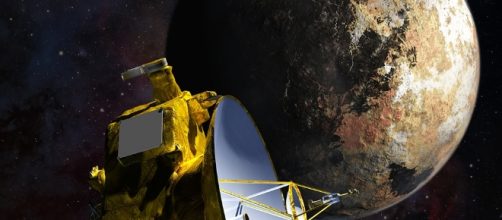In July 2015 NASA’s New Horizons space probe swept past Pluto, revealing the former ninth planet of the Solar System to be a stranger world than anyone could have imagined. Scientists will be pouring over the data and images sent back by the probe for decades to come. However, the story of New Horizons is not over yet. It has a new target for exploration that resides a billion miles beyond Pluto deep within that ring of jumbled rocky objects known as the Kuiper Belt.
Onward to 2014 MU69
Thanks to NASA having extended the mission of New Horizons at least through 2021, the probe is headed toward an object called 2014 MU69, thought to be 12 to 25 miles in diameter and residing a billion miles beyond Pluto.
When New Horizons passes close to MU69 on New Year's Day 2019, it will make observations of the body similar to the ones it did of Pluto. Scientists would like to get an idea of the object’s geology, topography, and surface temperature, among other things. New Horizons is also taking longer range observations of other Kuiper Belt objects as it hurtles further out from the solar system.
But New Horizons’ target may be stranger than people think
Recently MU69 passed between Earth and a distant star, giving New Horizon scientists the opportunity to observe what is called “occultation." This gave them insights about the object before New Horizons’ visit. With the aid of more than 50 telescopes including the Hubble Space Telescope and the European Gaia telescope, 100,000 images of the event were taken.
What researchers found was something stranger than they had previously thought.
The telescopic observations did not detect MU69 as such. But the results of the telescopic operation suggests that the Kuiper Belt object may not be what scientists thought it was. It might be more reflective and smaller than first thought. MU69 might even be a binary object or a swarm of smaller objects floating in space together.
All that means is that New Horizons may be in for some surprises when it arrives at MU69 on New Year’s Day 2019. That fact is one reason why many people find space exploration, whether by robots or astronauts, exciting. You never know what you’ll find until you go out to see for yourself.
The New Horizons team will make further observations of MU69 during occultation events due to take place on July 10 and July 17. The data that will be gathered will help scientists plan for the flyby to be held in a year and a half.


